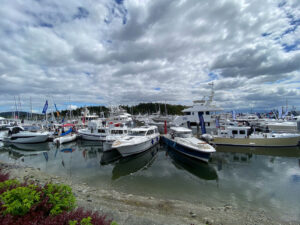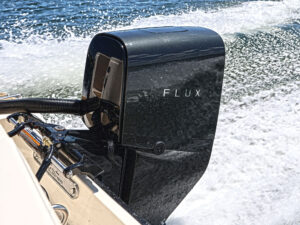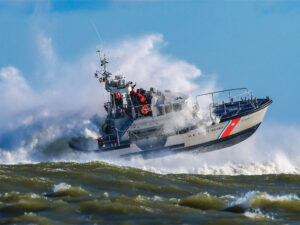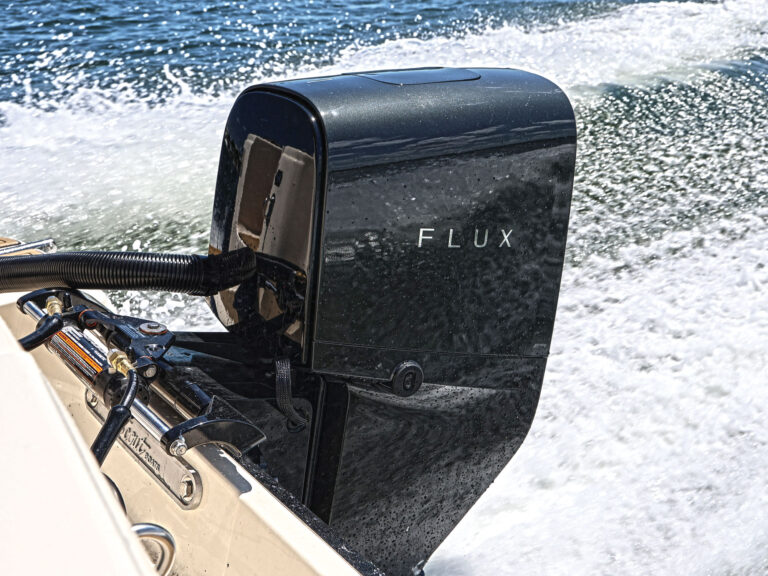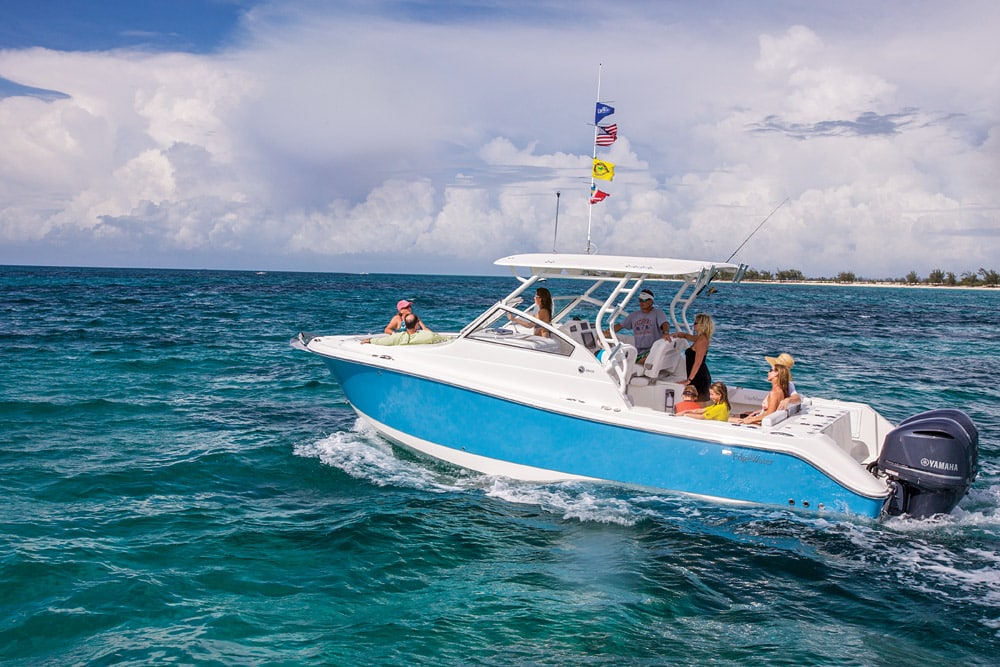
EdgeWater 280CX
Beam: 9’6″
Draft (max): 1’9″
Displacement (approx.): 6,500 lb.
Transom Deadrise: 21 degrees
Bridge Clearance: 9’6″
Max Cabin Headroom: 6’4″
Fuel Capacity: 200 gal.
Max Horsepower: 600
Available Power: Yamaha outboards to a combined 600 hp
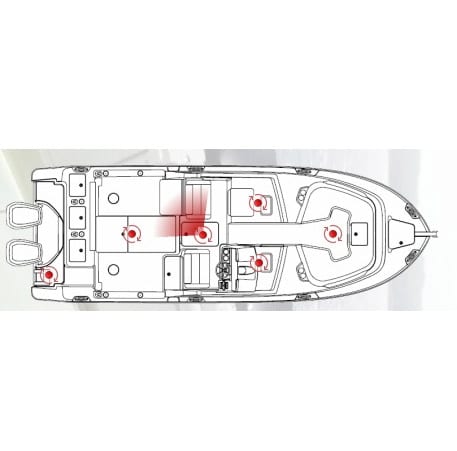
EdgeWater 280CX
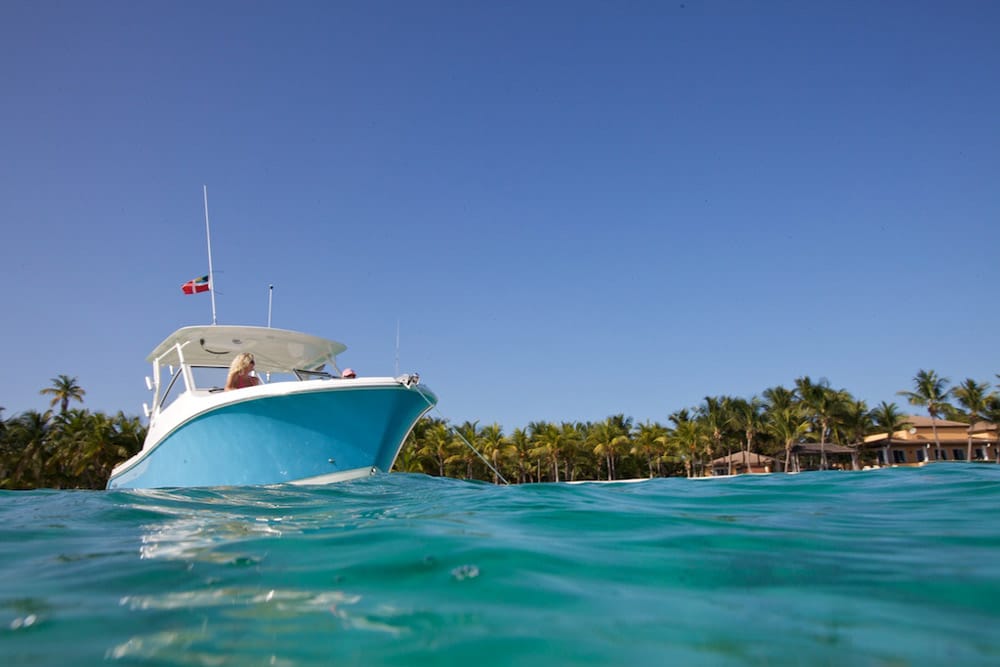
EdgeWater 280CX
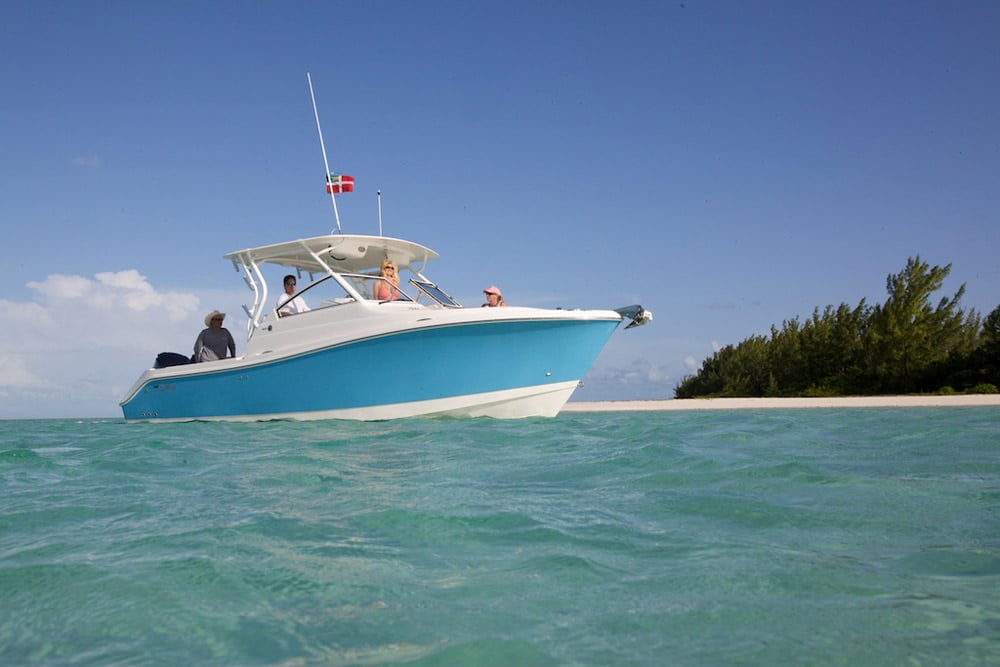
EdgeWater 280CX
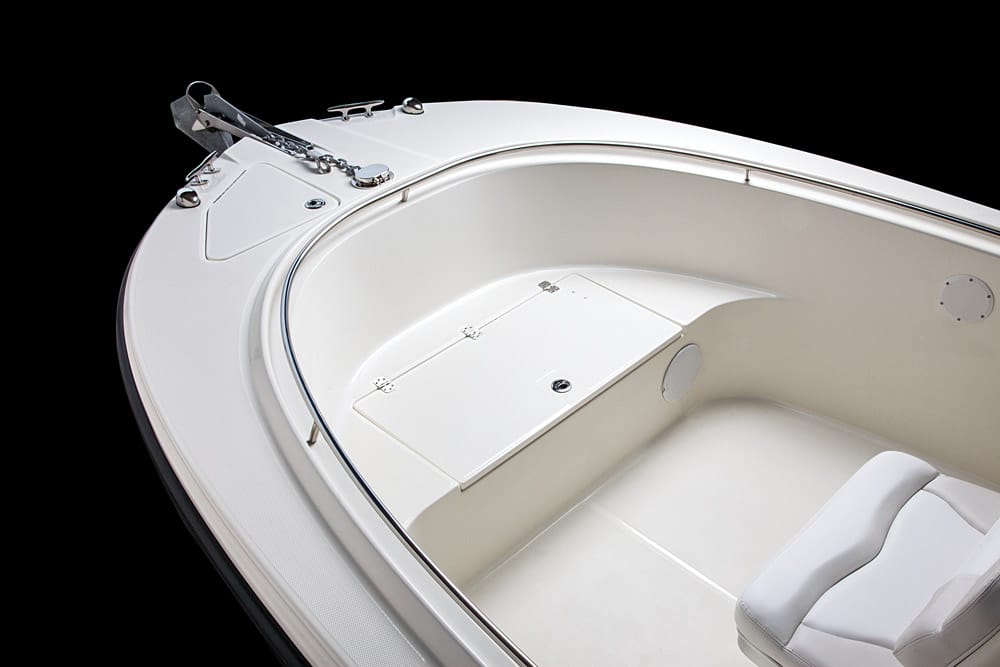
EdgeWater 280CX
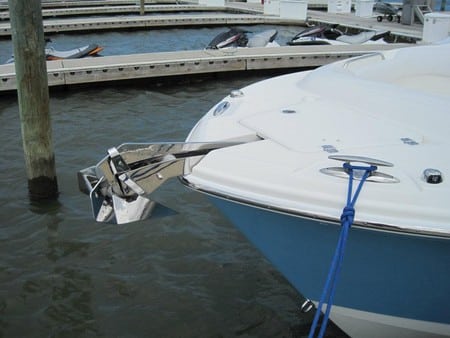
EdgeWater 280CX
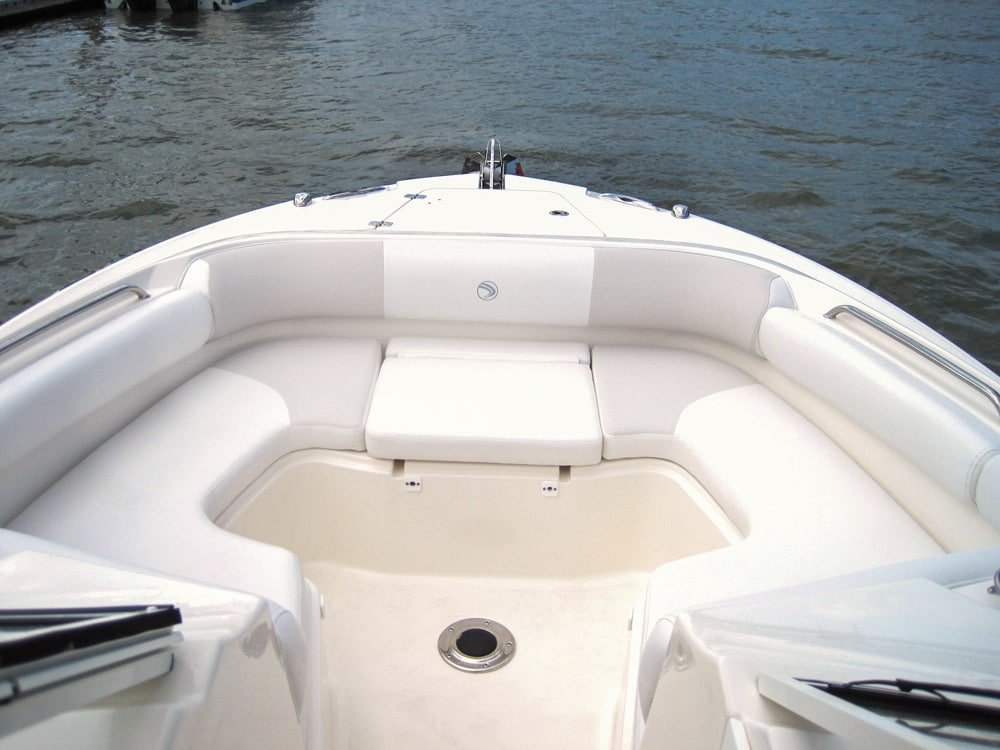
EdgeWater 280CX
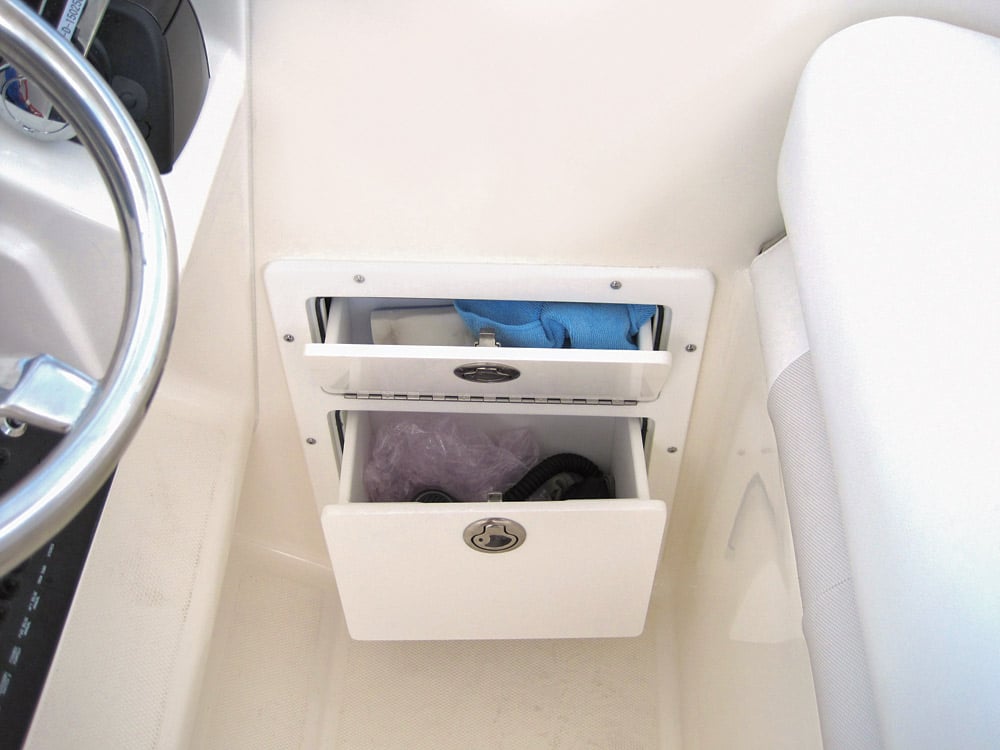
EdgeWater 280CX
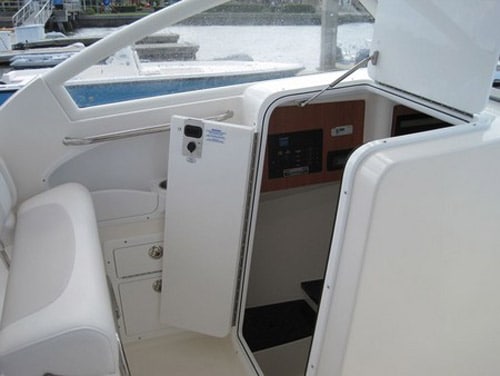
EdgeWater 280CX
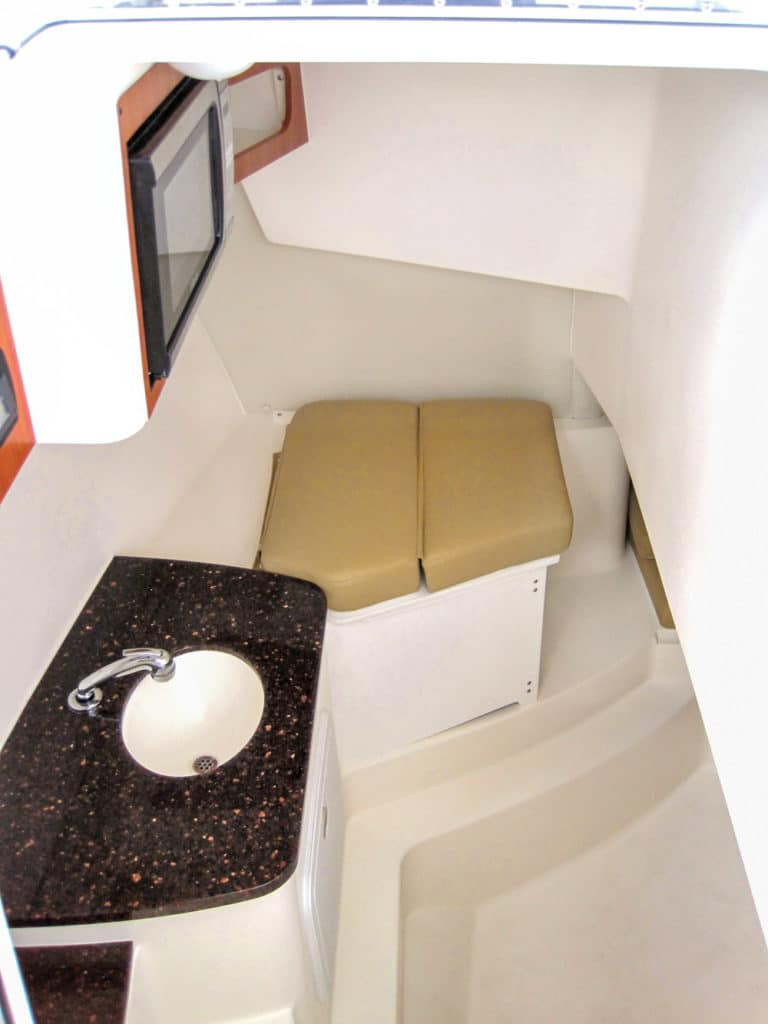
EdgeWater 280CX
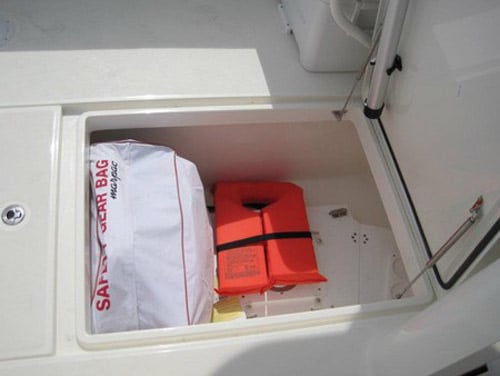
EdgeWater 280CX
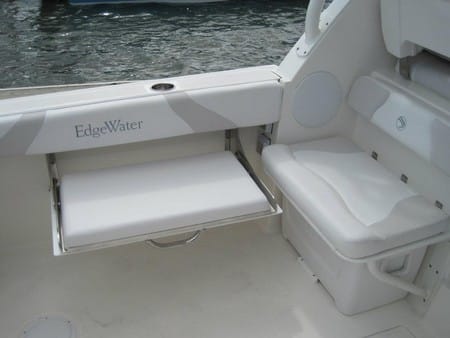
EdgeWater 280CX
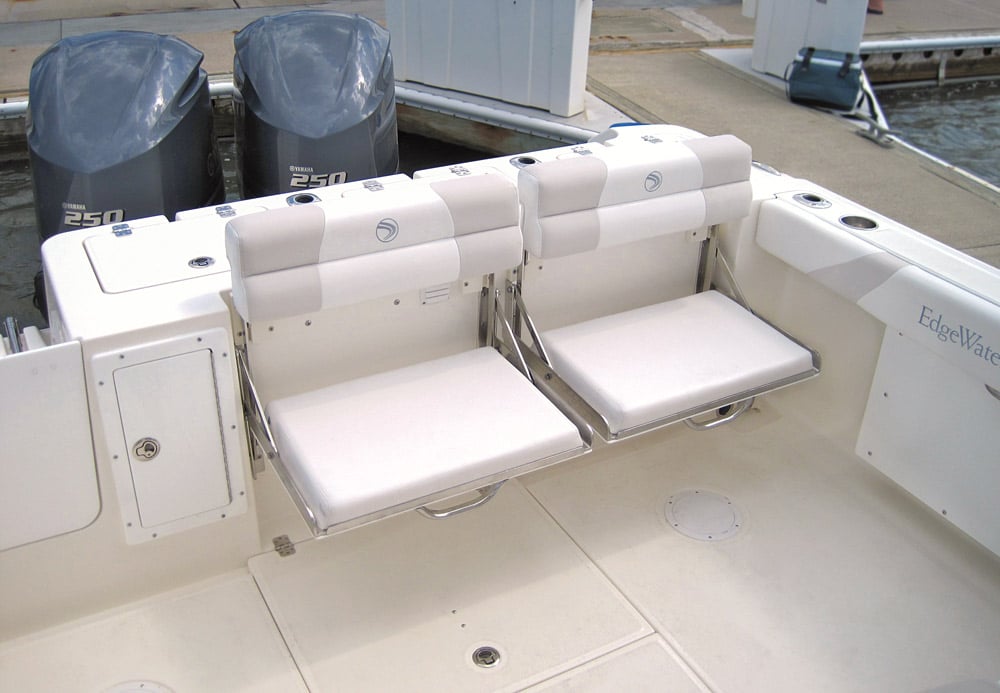
EdgeWater 280CX
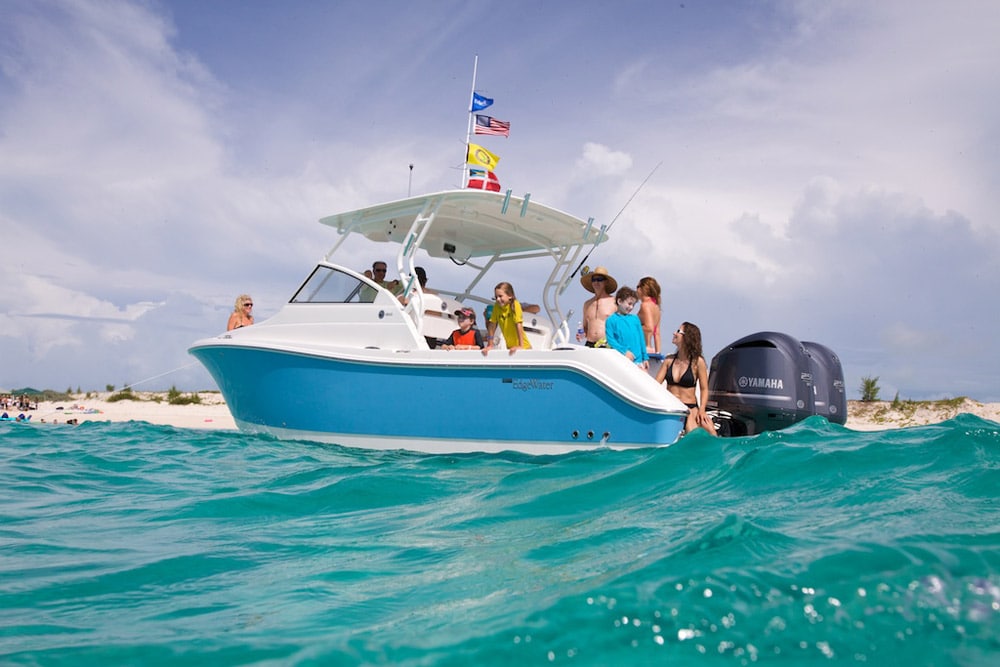
EdgeWater 280CX
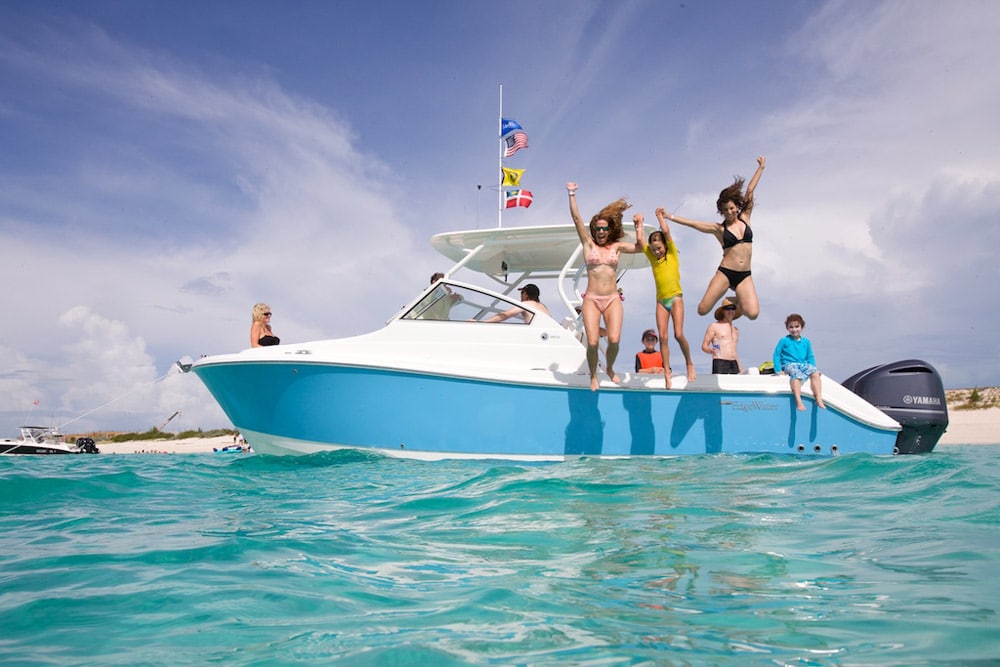
EdgeWater 280CX
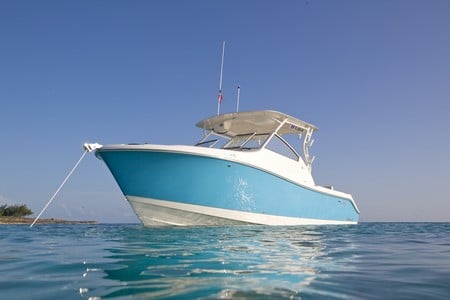
EdgeWater 280CX
I’ve seen several bigger, better and more badass dual consoles pop up over the last few years, with good reason. Just as SUVs have been rebranded as “crossover” vehicles in car companies’ efforts to mate rugged with practical (translation: mom-friendly), so too have boatbuilders latched onto the name in efforts to brand family-style fishing boats. The new EdgeWater 280CX (the “CX” stands for crossover) is an excellent iteration of this style, mating a rugged offshore build with familial features while not neglecting the fishing mission.
EdgeWater, founded by a marine industry mover and shaker, makes an unsinkable boat. All EdgeWaters are built using the SPI system, which stands for single-piece infusion construction. In this method, the hull and the interior grid system are infused with vinylester resin via a vacuum process, making the separate parts chemically bond together so that structurally they behave as one. Like Boston Whaler, EdgeWater fills its boats to the gills with closed-cell foam flotation. The result is a brick-house boat that doesn’t rattle or flex after years of abuse in heavy seas. Another benefit is a comfortable ride for the whole crew.
Since family is a driving factor in this boat’s layout, let’s look first at the friendly features. The main cockpit has 65.6 square feet of usable space, a number that bodes well for anglers but also gives room for a crowd on a cruise. Two sturdy double-wide jump seats fold out from the transom on rugged stainless-steel supports that will handle the weight of your most rotund friends and hold up during use on a ride in rough seas. Another bench folds out from the portside gunwale, creating a conversation pit. There’s also built-in aft facing seating to port that houses a removable cooler.
Stepping up to the helm area, the captain can enjoy company at the wheel thanks to the double-wide helm seat with flip-up bolsters and flip-down armrests. Another double-wide seat sits to port, with a flip-up footrest for the passengers. Both are protected from the sun by the standard hardtop, featuring beefy and well-mounted powder-coated aluminum supports. If the shade’s not enough, there’s room under the helm step-up to mount a genset to power air conditioning.
Forward, the bow lounge wraps around in circular fashion, capable of comfortably seating four grown-ups. No matter where you sit, a stout stainless-steel grab rail is easily in reach, and there are four stainless-steel drink holders. A built-in cooler that drains outboard adds to the convenience.
Major players in the fish-boat market offer dual consoles, from the smaller, lighter Boston Whaler 270 Vantage ($139,898, base boat with twin 225 hp Mercury Verados) to the Grady-White Freedom 285 ($160,825, base boat with twin Yamaha F250s). The Freedom 285 offers a different cockpit layout, with a full aft bench rather than jump seats and a portside seat with a motorized lounge extension.
The EdgeWater differs in its attempt to create a berth underneath the bow cockpit. A door in the port console opens to reveal two molded steps down to a galley area, which features a fully plumbed head, hidden under a starboard cover with a cushion, a sink and a microwave. If you bend down and crouch under the underside of the bow cockpit walkway, you’ll gain access to a lounge with a flat-screen TV, overhead Bomar hatches and a cushion that unfolds to a full double berth. I could stand up fully in this “day” room, which features 6 feet 4 inches of headroom. While accessing it under the “hump” is awkward, it’s usable space that other boats don’t have.
What about the fishing features? A 28-gallon livewell comes standard, with the option to plumb a second 28-gallon one. The starboard inwale features three rod holders and a stainless-steel toe kick. The hardtop has four rod holders, and there are two gunwale-mounted holders per side. Cockpit coaming bolsters help with the fish-fighting comfort. The sole holds an insulated 500-quart fish box with a pump-out. The dash at the helm has plenty of space to flush-mount all the necessary fishy electronics. Behind the helm there’s a bait prep station with a cutting board, tackle drawers and a freshwater sink. One problem shared by every dual console in the world is the lack of 360-degree fish-fighting ability; the consoles prevent full freedom of movement as on a center-console or even, to a lesser degree, a walk-around. That said, million-dollar sport-fish owners are confined to their cockpits when fighting pelagics and they don’t seem to gripe about it.
On the water, the twin Yamaha F250s powered this three-ton beast to 52 mph. I didn’t get to play in rough seas, but I have it on good authority that EdgeWater’s field testing included sending two couples across the ’Stream to the Bahamas, and all involved praised the ride. More important, they didn’t try to kill each other — as good a testament to a “crossover” boat as you’ll find.
Comparable models: Boston Whaler 270 Vantage, Grady-White Freedom 285
**
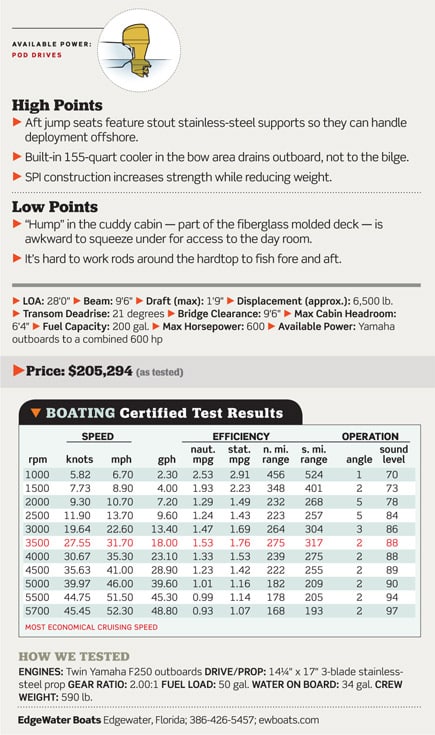
**


